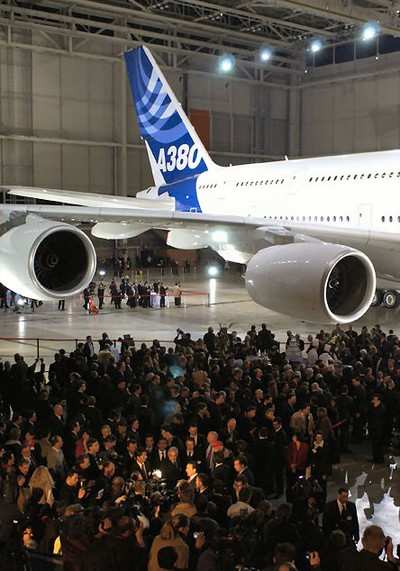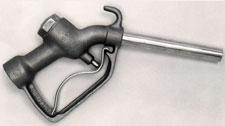Wed, Sep 21, 2005
Fare Wars, Oil Prices Cause Major Concern For Carriers,
Subcontractors
 Faced with structural growth in air
traffic, increased competition, price pressure, and the rise in oil
prices, the airline industry is facing new challenges that are
hurting carriers and subcontractors, according to a study by global
trade credit insurer Euler Hermes. However, the effects are widely
varied between aircraft manufacturers and the airlines
themselves.
Faced with structural growth in air
traffic, increased competition, price pressure, and the rise in oil
prices, the airline industry is facing new challenges that are
hurting carriers and subcontractors, according to a study by global
trade credit insurer Euler Hermes. However, the effects are widely
varied between aircraft manufacturers and the airlines
themselves.
Economists and trade credit insurance experts from Euler Hermes
– the world's leading provider of trade credit insurance and
risk management information – studied the profitability
outlook and claims experience for the various industry players.
Euler Hermes has determined that the aircraft manufacturing sector
seems to be the only portion of the airline industry that is
experiencing success, with overflowing order backlogs. Meanwhile,
the airlines – and, subsequently in a domino effect, the
subcontractors working for the airlines – have been
weakened.
Major airlines have been weakened by the increasing success of low
cost carriers and rising oil prices. The major carriers have been
under pressure, despite the strong upturn in air traffic since 2003
and a forecast rise over the next 20 years boosted by growth in
Asia. Worldwide growth in the number of low cost airlines has
especially hurt the large US carriers.

According to Euler Hermes, the low cost airlines have a more
efficient cost structure and are more easily able to offer
competitive rates while keeping sufficient profit margins. Discount
carriers have increased their US market share from 4% at the
beginning of 1990 to 12.5% in 2001 and 18% in 2003. Euler Hermes
estimates that in 2005, the total market share for the low cost
carriers will reach 25%, with a 40% market share expected by 2014.
Meanwhile, fare prices have tumbled by nearly a third over the past
10 years.
"In the US, we have seen the discount carriers come on very strong
in the past few years, both in price pressure and market share,"
said Lynne Borkowski, Euler Hermes ACI Risk Underwriting Vice
President. "The major airlines, which were already shaken by the
competition from their low cost rivals and high labor costs, are
now faced with significantly higher oil prices. This has led
several of the major carriers to seek bankruptcy protection and
reorganization."
The increase in oil prices has been strong over the past three
years: +20.4% in 2003, +38% in 2004, and +56% in 2005.
Consequently, the airlines have seen their oil costs rise to nearly
double the level from three years ago. In 2006, the average price
of a barrel of oil will decrease to an estimated $48 in view of a
global slowdown, resulting in slightly lower fuel bills. The impact
is expected to provide a slower decrease in the price of jet
fuel.
 Aircraft manufacturers have
protected their satisfactory profit margins due to better cost
control. Despite a sharp fall in business between 2001 and 2004
– which is amplified for North American manufacturers by the
euro/dollar exchange rate -– the main jet makers succeeded in
maintaining satisfactory margins due to better cost control. Boeing
has also helped its profitability through its military
manufacturing commitments.
Aircraft manufacturers have
protected their satisfactory profit margins due to better cost
control. Despite a sharp fall in business between 2001 and 2004
– which is amplified for North American manufacturers by the
euro/dollar exchange rate -– the main jet makers succeeded in
maintaining satisfactory margins due to better cost control. Boeing
has also helped its profitability through its military
manufacturing commitments.
Having hit a low in 2003 with only 586 planes delivered, the two
main manufacturers -– Airbus and Boeing –- should
increase deliveries by 38% and 48% respectively between 2004 and
2007.
Equipment manufacturers also have good prospects, since they
specialize in niche markets and are bolstered by a profitable
maintenance business that cushions them from the shock of downturns
in the general economy. Some have also chosen to expand operations
via acquisitions, given that the market is still fragmented.
More News
Aero Linx: International Business Aviation Council Ltd IBAC promotes the growth of business aviation, benefiting all sectors of the industry and all regions of the world. As a non->[...]
"During the annual inspection of the B-24 “Diamond Lil” this off-season, we made the determination that 'Lil' needs some new feathers. Due to weathering, the cloth-cove>[...]
Also: Bushcat Woes, Hummingbird 300 SL 4-Seat Heli Kit, Carbon Cub UL The newest Junkers is a faithful recreation that mates a 7-cylinder Verner radial engine to the airframe offer>[...]
Also: Seaplane Pilots Association, Rotax 916’s First Year, Gene Conrad After a decade and a half of struggling with the FAA and other aero-politics, G100UL is in production a>[...]
Also: Martha King Scholarship, Montaer Grows, Textron Updates Pistons, FlySto The FAA is hiring thousands of air traffic controllers, but the window to apply will only be open for >[...]
 ANN's Daily Aero-Linx (04.16.24)
ANN's Daily Aero-Linx (04.16.24) Aero-News: Quote of the Day (04.16.24)
Aero-News: Quote of the Day (04.16.24) Airborne 04.10.24: SnF24!, A50 Heritage Reveal, HeliCycle!, Montaer MC-01
Airborne 04.10.24: SnF24!, A50 Heritage Reveal, HeliCycle!, Montaer MC-01 Airborne 04.12.24: SnF24!, G100UL Is Here, Holy Micro, Plane Tags
Airborne 04.12.24: SnF24!, G100UL Is Here, Holy Micro, Plane Tags Airborne-Flight Training 04.17.24: Feds Need Controllers, Spirit Delay, Redbird
Airborne-Flight Training 04.17.24: Feds Need Controllers, Spirit Delay, Redbird





